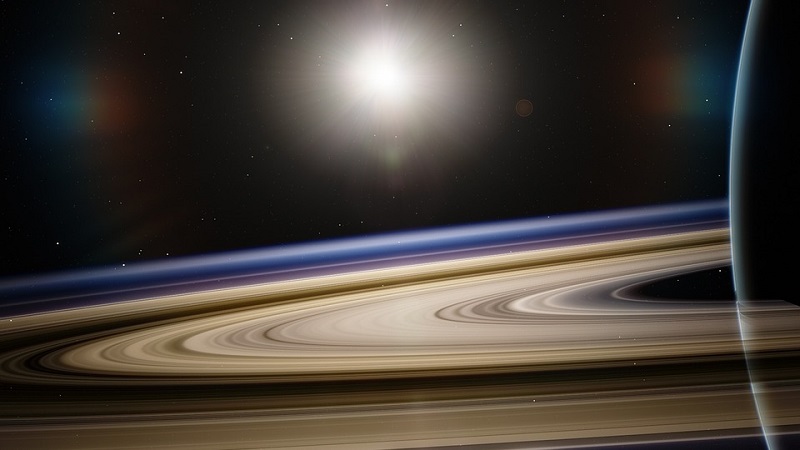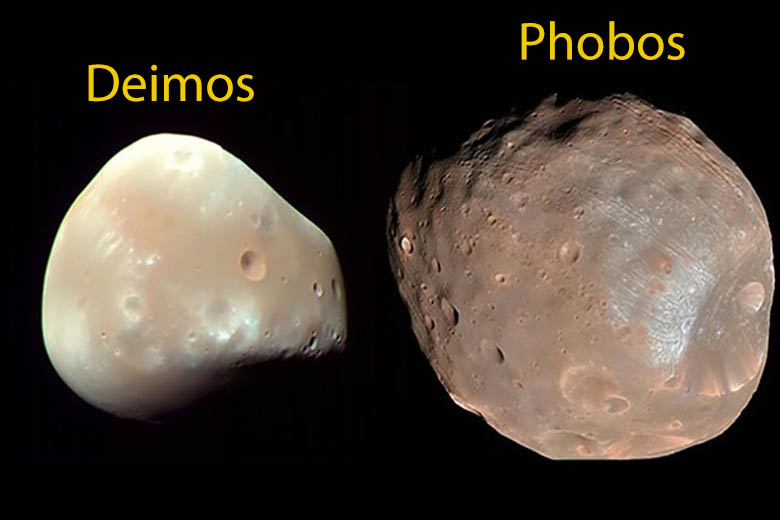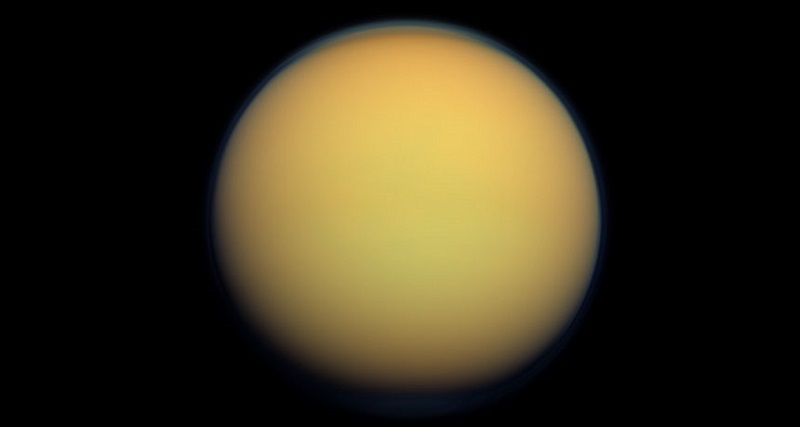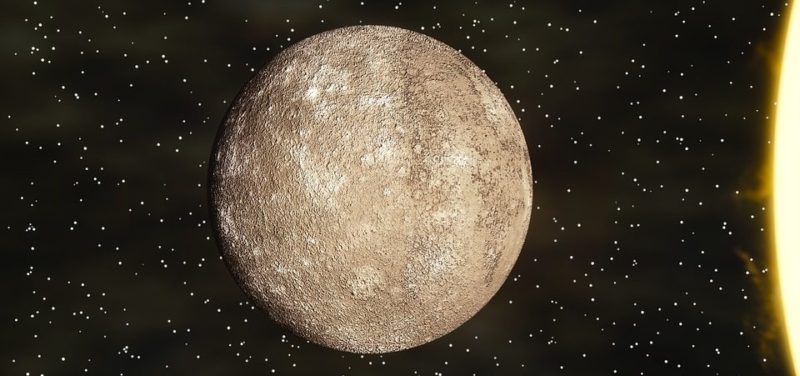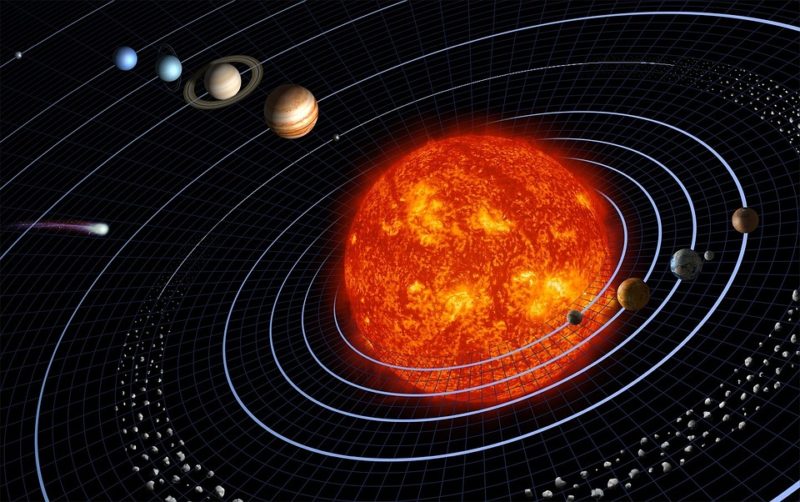The gas planet Saturn attracts the attention of many astronomers because of its rings. It is It’s known now that other gas giants have rings also, but in the past, Saturn was considered utterly unique. Perhaps, his rings will become a source of valuable resources for humanity in the future.
Amazing facts about Saturn
- Among all the planets in the Solar System, Saturn is the second-largest, and this is without counting its rings! Their diameter is greater than the diameter of Jupiter, the most huge gas giant.
- It has more moons than any other planet in our system, as many as 82. The second place belongs to Jupiter which has 79 moons.
- Saturn can sometimes be seen from the surface of the Earth with the naked eye. This is the farthest planet from the Sun that can be seen without a telescope.
- A super-powerful giant hurricane called the Great White spot occurs on it once every 29.5 years. It was last observed in 2010, and its next occurrence is expected in 2040. The cause of its occurrence is considered to be a source of energy hidden under the cover of continuous clouds.
- The wind speed in the atmosphere of Saturn can reach 1120 mph (1800 kph). This is about 4.5 times more than the highest speed of a hurricane ever recorded on Earth – 253 mph (408 kph).
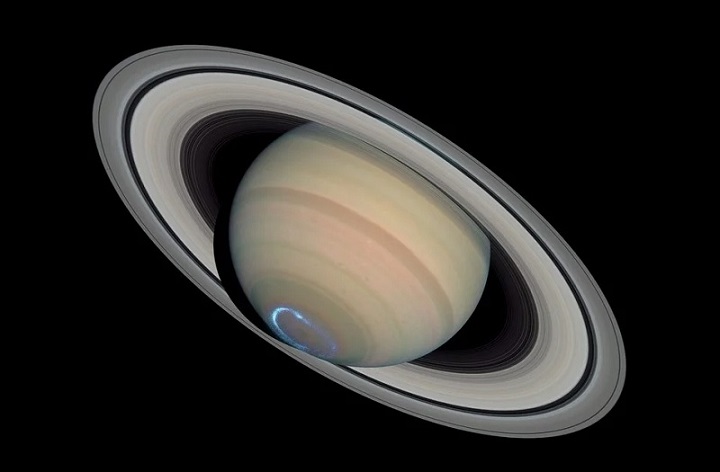
- The average density of Saturn is 32% lower than that of water. If this planet were placed in a giant pool, it would float on its surface.
- Like other gas giants, Saturn probably has a solid rock core, but no solid surface at all.
- The day on it lasts only a little longer than on Jupiter, about 10.5 hours. Due to its high rotation speed plus the low density, Saturn has become the most flattened planet in the Solar System, and its polar diameter is about 6200 miles (10,000 km) smaller than the Equatorial one.
- There are polar lights on Saturn too, and they are really unique – solid circular lines surrounding the planet’s poles.
- In 2006, a new type of Saturn’s moons, the mini-moons, was discovered using the Cassini-Huygens probe. They are small celestial bodies with a diameter of about 300 feet (100 meters) located directly in the planet’s rings. Scientists claim there might be up to 10 million of such mini-moons inside Saturn’s rings.
- The first astronomer to see Saturn’s rings through a telescope was Galilei. But he has never found out what he was observing, even though he recorded all his observations.
- Titan, the largest moon of Saturn, is the second-largest moon in the Solar System. It’s larger than the Moon and Mercury. Only Ganymede, Jupiter’s moon, is 2% larger than Titan in diameter.
- The width of Saturn’s rings ranges from 4400 to 50,000 miles (7,000 to 80,000 km), but their thickness is small. At the thickest ring it reaches 3300 feet (1 km), and at the thinnest one, it doesn’t exceed 30-35 feet (10-12 meters).
- Rivers, lakes, seas, and clouds have been detected on Titan, Saturn’s moon. The temperature there is extremely low, so there are reservoirs of liquefied methane and ethane with admixtures of ammonia and other gases instead of water on Titan.
- There are clouds of regular hexagonal shape stable for decades or even more at the North pole of Saturn. The cloud complex is so large that our Earth would fit 4 times in there. What these hexagonal clouds are is another mystery.
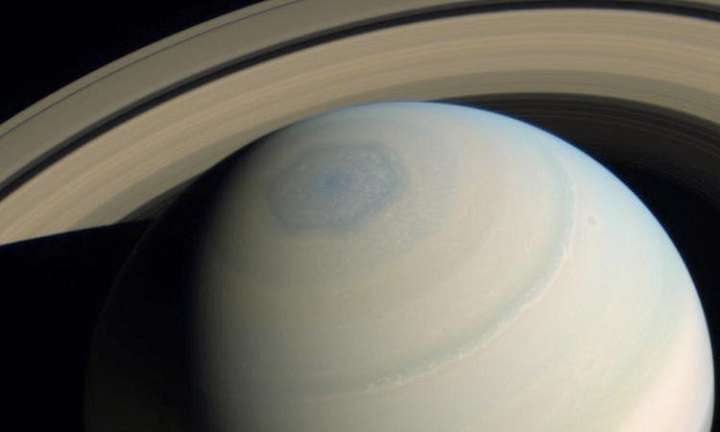
- Saturn’s rings consist of about 93% water ice. Scientists believe that a significant contribution to their formation was made by cryovolcanoes on Enceladus, one of the gas giant’s moons. These cryovolcanoes regularly throw ice into space with such force that it is captured by the gravity of the mother planet.
- Enceladus is considered one of the most promising places in our system in terms of searching for extraterrestrial life since it probably has a subsurface ocean of water. Just like Europa, Jupiter’s icy moon.
- The other moon, Hyperion, has a 4:3 orbital resonance with Titan. Therefore, the duration of the day on it changes by tens of percent over several weeks and doesn’t remain constant.
- Two small moons of Saturn, Janus, and Epimetheus, have very interesting orbits. More precisely, they change their orbits once every 4 years! Gradually converging, they come close to the point of collision, but they change places instead, and the cycle repeats again after 4 years.
- Most of the gas giant’s rings are made up of very small particles. But some fragments have a diameter of tens of feet.
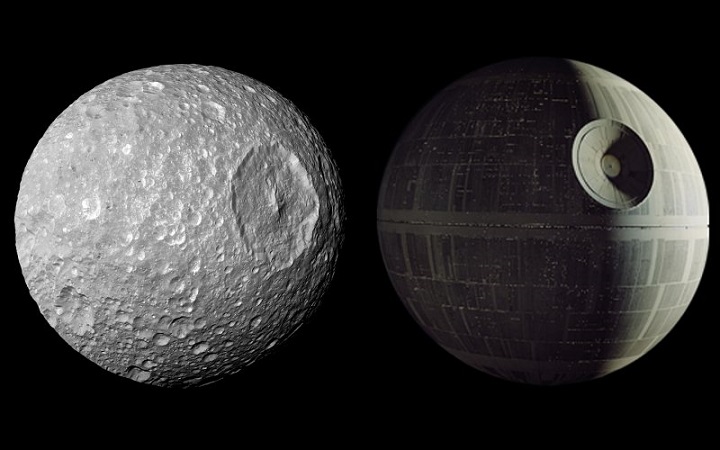
- Each of Saturn’s main rings consists of thousands of narrower rings separated by gaps. Their origin is still debated in the scientific community.
- The atmosphere of Saturn’s moon Titan is denser than that of Earth.
- Another moon, Mimas, is interesting because of the giant crater Herschel located on its surface. It is so large that its diameter is about 1/3 of that of Mimas itself! The crater walls are 16,500 feet (5 km high) and 33,000 feet (10 km) deep. We can only guess what kind of monstrous collision left this mark on the surface of Mimas.
- The change of seasons on Saturn is expressed vividly. However, each of them lasts about 7 standard years.
- Saturn was visited by spacecraft only 4 times in the entire history of space exploration. The most significant contribution to the study of the gas giant and its moons was made by the Cassini interplanetary station and Huygens probe. They had already completed their mission – the Huygens had made a soft landing on the surface of Titan, and the Cassini station had been sent into the atmosphere of Saturn to burn up in it.
- The magnetic field of Saturn extends for a considerable distance, about 620,000 miles (1 million km) from the planet, which is three times the distance between the Earth and the Moon.
- Saturn is made up of hydrogen and helium mostly. The pressure in its bowels is so high that even the nuclei in the molecules are compressed, and the hydrogen takes a metalized form. Scientists estimate that this occurs at a depth of approximately 18,700 miles (30,000 km), and the pressure there reaches 3.000.000 atm.
- This planet radiates 2.5 times more energy into space than it receives from the Sun. It is produced in its bowels.
- The core temperature of the gas giant reaches about 11.700 °K, which is twice the temperature of the Sun’s surface.
- The Cassini-Huygens interplanetary research station took 7 years to reach Saturn. The mission was supposed to last 4 years, but in fact, the station worked for 13 years.
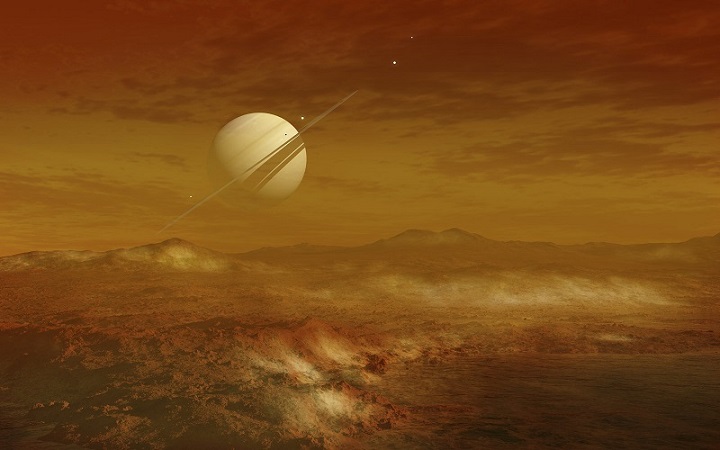
- There’s a giant Ithaca Chasma canyon on Saturn’s moon Tethys. It nigh encircles this celestial body! The canyon stretches for 3/4 of the circumference of Tethys (which is about 1250 miles or 2000 km) and is up to 65 miles (100 km) wide.
- Dione, another Saturn’s moon, has a very thin atmosphere consisting of oxygen. But it is really very thin, about 1 oxygen ion per 0,67 cubic inch (11 cubic cm) of space. Another moon, Rhea, also has an atmosphere of oxygen and carbon dioxide, but it’s so thin that the atmospheric pressure on the surface of Rhea is close to zero.
- All of Saturn’s major moons except for Titan are made up mostly of water ice, up to 50-70% of their mass.
- The color of Saturn changes noticeably from time to time. Most likely, this is due to the change of seasons on this planet, but no one can say for sure yet.
- A number of NASA scientists consider Enceladus the most suitable body for colonization in the Solar system, even more promising than Mars, the Moon, or Titan.
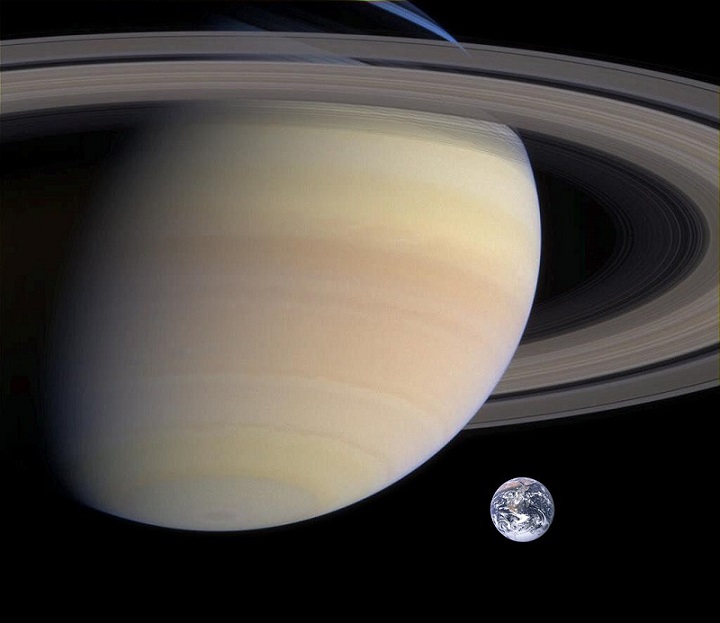
- Rhea, a moon of Saturn, probably has had its own rings in the past. The Cassini station hasn’t been able to detect them, but there are traces on the surface of Rhea that can be identified as traces of falling particles that made up the rings before.
- The diameter of Saturn’s rings reaches 155,000 miles (250,000 km), but their density is low. If all the material of the rings could be collected in one monolithic ball, we would get another moon with a diameter of just under 65 miles (100 km).
- A year on Saturn lasts about 29 standard years. And since there are 4 seasons, each of them lasts about a quarter of this period.
- The Equatorial diameter of Saturn is 9.44 times that of Earth, and the mass of the gas planet is 95 times that of Earth.
- If this gas giant had a solid surface where the upper layer of its atmosphere is located, the acceleration of gravity on it would be only about 92% of the Earth’s. Such a low gravity (taking into account the mass of the planet) is due to the low density of Saturn.
